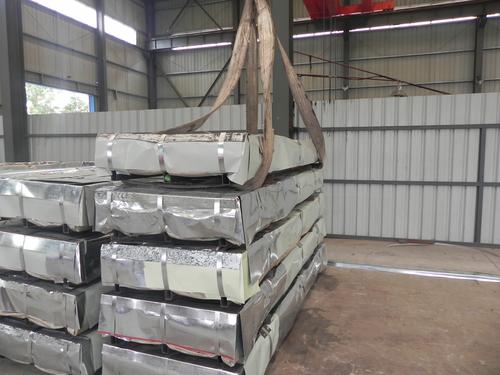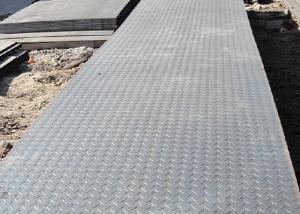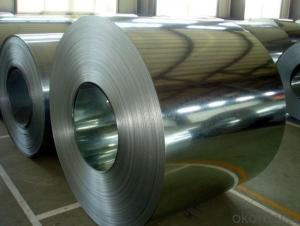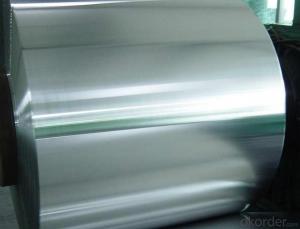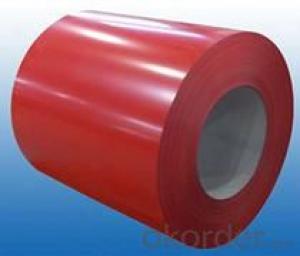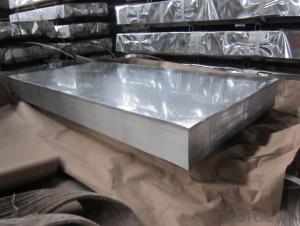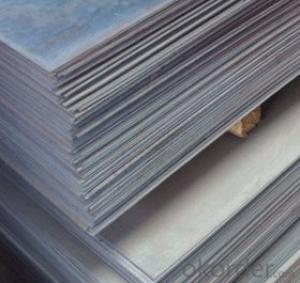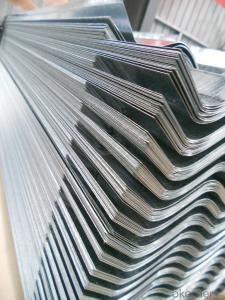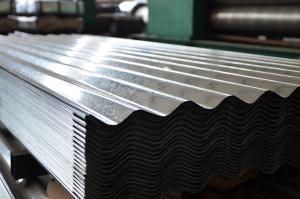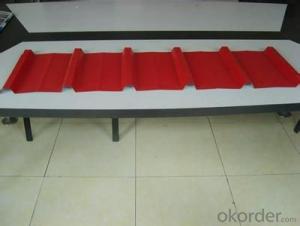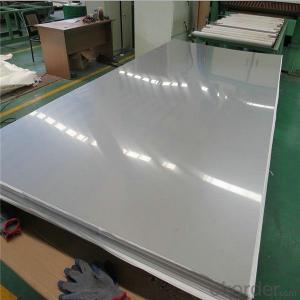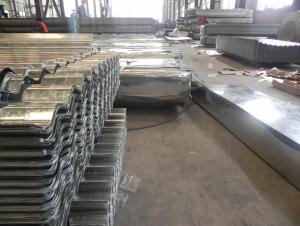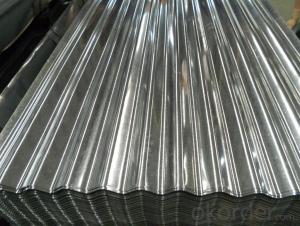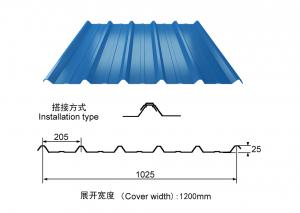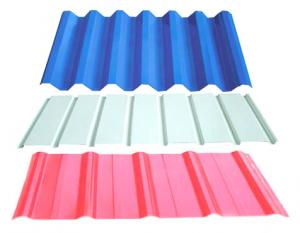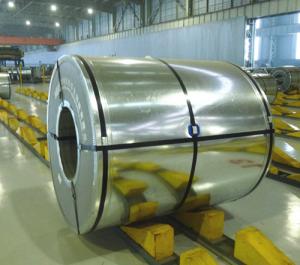GALVANIZED CORRUGATION STEEL SHEET
- Loading Port:
- Tianjin
- Payment Terms:
- TT OR LC
- Min Order Qty:
- -
- Supply Capability:
- 5000 m.t./month
OKorder Service Pledge
Quality Product, Order Online Tracking, Timely Delivery
OKorder Financial Service
Credit Rating, Credit Services, Credit Purchasing
You Might Also Like
GALVANIZED CORRUGATION STEEL SHEET
MATERIAL: FULL HARD, ZINC: 50G. CORRUGATION: 11NOS.
BUNDLE WEIGHT: 2-4MT, PACKAGE:SWAWORTHY PACKING
SIZE:0.3MM*900MM(1000 BEFORE)*3000
- Q: What is the tensile strength of steel sheets?
- The tensile strength of steel sheets varies depending on the grade and thickness, but it typically ranges from 300 to 2,500 megapascals (MPa).
- Q: Can steel sheets be painted or powder-coated after installation?
- Yes, steel sheets can be painted or powder-coated after installation. Painting or powder-coating steel sheets after installation is a common practice to enhance their aesthetic appeal and provide additional protection against corrosion. The process involves thoroughly cleaning the steel surface, applying a primer to ensure good adhesion, and then applying the desired paint or powder coating. This can be done on-site or in a specialized facility, depending on the size and complexity of the steel sheets. Additionally, it is important to ensure that the chosen paint or powder coating is suitable for exterior use and can withstand the environmental conditions to which the steel sheets will be exposed.
- Q: What is the average thermal conductivity of steel sheets?
- The thermal conductivity of steel sheets can differ based on multiple factors, including the specific type or grade of steel, its composition, and temperature. However, on average, steel sheets have a thermal conductivity ranging between 15 and 30 Watts per meter-kelvin (W/m·K). This signifies their effectiveness in conducting heat and facilitating the efficient transfer of thermal energy across their surfaces. It should be emphasized that the precise thermal conductivity of a particular steel sheet can be determined through laboratory testing or by referring to the manufacturer's technical specifications.
- Q: How do steel sheets perform in terms of scratch resistance?
- Steel sheets are known for their exceptional scratch resistance. Due to their strong and durable nature, steel sheets are highly resistant to scratches and abrasions. This makes them ideal for various applications where the material may come into contact with potentially damaging objects or surfaces. Steel sheets can withstand normal wear and tear, making them suitable for heavy-duty and high-traffic environments. Additionally, steel sheets can be further enhanced with coatings or finishes to provide an even higher level of scratch resistance. Overall, steel sheets are renowned for their excellent scratch resistance, making them a reliable choice for many industrial and commercial applications.
- Q: What are the common applications of steel sheets?
- Steel sheets have a wide range of applications in various industries such as construction, automotive, manufacturing, and aerospace. They are commonly used for building structures, roofing, siding, and fencing in the construction industry. In automotive manufacturing, steel sheets are utilized for body panels, chassis, and various components due to their strength and durability. Additionally, steel sheets are widely employed in the manufacturing sector for fabrication, stamping, and forming processes. Lastly, the aerospace industry relies on steel sheets for aircraft structures, engine components, and other critical parts due to their high strength-to-weight ratio and resistance to extreme temperatures.
- Q: Are steel sheets resistant to bending or deformation?
- Yes, steel sheets are generally resistant to bending or deformation due to their high tensile strength and rigidity.
- Q: Are steel sheets suitable for interior wall cladding?
- Yes, steel sheets are suitable for interior wall cladding. They provide a durable and modern aesthetic, are resistant to moisture and fire, and can be customized to fit various design styles.
- Q: Are steel sheets suitable for electrical applications?
- Yes, steel sheets are suitable for electrical applications. Steel is known for its high conductivity and durability, making it an ideal material for electrical components such as transformers, motors, and generators. Additionally, steel sheets offer excellent magnetic properties and can be easily fabricated into desired shapes, further enhancing their suitability for electrical applications.
- Q: How are steel sheets coated for corrosion resistance?
- Steel sheets are typically coated for corrosion resistance through various methods such as hot-dip galvanizing, electroplating, or applying organic coatings like paints or powder coatings.
- Q: Can steel sheets be used for containers or storage units?
- Yes, steel sheets can be used for containers or storage units. Steel is a durable and strong material that provides excellent protection for storing goods or as containers for transportation. Additionally, steel is resistant to corrosion, making it suitable for long-term storage in various environments.
Send your message to us
GALVANIZED CORRUGATION STEEL SHEET
- Loading Port:
- Tianjin
- Payment Terms:
- TT OR LC
- Min Order Qty:
- -
- Supply Capability:
- 5000 m.t./month
OKorder Service Pledge
Quality Product, Order Online Tracking, Timely Delivery
OKorder Financial Service
Credit Rating, Credit Services, Credit Purchasing
Similar products
Hot products
Hot Searches
Related keywords



